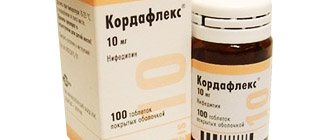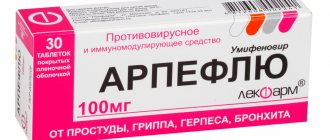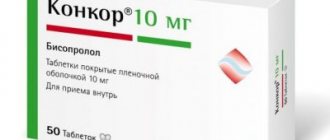Tramadol hydrochloride is a strong pain reliever and sedative prescribed for patients with moderate to severe pain. The drug is produced only in Germany and imported from there throughout the world. Prescribed for adults and adolescents over 12 years of age. Widely known because often used for other purposes, but instead of drugs.
Tramal is sold in pharmacies with a prescription and is available in several forms. More often it is:
- Tablets with delayed release of Tramal 50 mg, 100 mg, 150 mg, 200 mg.
- Fast acting capsules,
- Oral drops,
- Tramal solution for injection.
Please note that the real medicine is not sold online. But the tramal-containing “Zaldiar”, which causes severe drug addiction, is widely advertised and distributed; it is purchased illegally only for the sake of a high. This poison has claimed many lives, beware of it!
Recommendations for use
The recommended dose is 100–200 mg (1–2 tablets) twice daily, preferably morning and evening. Your doctor will adjust the dose depending on the degree of pain and its response to tramalotherapy. Your doctor may prescribe a lower starting dose.
To slow down the effect of Tramal, the tablets should be swallowed whole with plenty of liquid. They should not be crushed or chewed. Crushing or chewing tablets causes rapid release of ingredients and increases the risk of side effects.
The maximum daily dose should not exceed 300-400 mg in elderly patients (over 75 years of age). If you miss a dose, take 1 dose as soon as you remember or as usual. But never take a double dose to make up for lost time! Always follow your doctor's advice on taking the drug. Do not give Tramal medicine to anyone else, even if they are in pain.
The drug should be stored at temperatures up to 30°C in a closed cabinet at a height of at least 1.5 m above the ground (out of reach of children), protected from light. Do not use Tramal if the expiration date has passed or the packaging is damaged.
Tramal retard 100 mg, 10 film-coated tablets
Registration Certificate Holder
GRUNENTHAL (Germany)
Dosage form
Medicine - Tramal Retard
Description
Extended-release film-coated tablets
white, round, biconvex; “T1” is engraved on one side and a special symbol on the other.
1 tab.
tramadol hydrochloride 100 mg
Excipients
: microcrystalline cellulose 124 mg, hypromellose 100,000 mPa•s 80 mg, colloidal silicon dioxide 3 mg, magnesium stearate 3 mg.
Film shell composition:
hypromellose 6 mPa•s 4.93 mg, lactose monohydrate 2.55 mg, macrogol 6000 1.23 mg, propylene glycol 0.41 mg, talc 1.65 mg, titanium dioxide 1.23 mg.
10 pieces. - blisters made of PVC/PVDC/aluminum foil (1) - cardboard packs.
Indications
Acute and chronic, moderate and severe pain syndrome of various etiologies (including in the elderly and patients with difficulty breathing):
- for malignant tumors;
- for injuries;
- for neuralgia;
- during diagnostic and therapeutic procedures.
Prevention of pain syndrome in the preoperative period.
Contraindications for use
- acute poisoning with alcohol, sleeping pills, analgesics or psychotropic drugs (i.e. drugs acting on the nervous system);
- drug withdrawal syndrome;
- pregnancy;
- lactation (possible single use for health reasons);
- children under 14 years of age;
- simultaneous use of MAO inhibitors and a 2-week period after their withdrawal;
- hypersensitivity to tramadol or other opioid analgesics.
pharmachologic effect
Opioid analgesic. It has a pronounced analgesic effect, which is due to an agonistic effect on opioid receptors in the central nervous system. Tramadol is a synthetic opioid, a racemate of (+) and (-) isomers, which contribute to the analgesic effect in different ways. The (+) isomer is a pure opioid receptor agonist, the (-) isomer inhibits the neuronal uptake of norepinephrine, activates the central descending noradrenergic system, which disrupts the transmission of pain impulses into the gelatinous substance of the spinal cord, both isomers act synergistically. Causes a sedative effect.
In therapeutic doses, tramadol has virtually no effect on hemodynamic parameters and does not inhibit respiratory function. With controlled use, addiction and drug dependence develop extremely rarely and are less pronounced compared to morphine.
From Tramal tablets, retard tramadol enters the blood slowly but constantly, which leads to an increase in the duration of action of the drug.
Drug interactions
When Tramal retard is used simultaneously with other drugs that have a depressant effect on the central nervous system (including tranquilizers or hypnotics), as well as with ethanol, the side effects of tramadol may increase.
With simultaneous or previous use of cimetidine (an inhibitor of microsomal liver enzymes), there may be no drug interaction with tramadol.
With simultaneous or previous use of carbamazepine (an inducer of microsomal liver enzymes), the intensity or duration of the analgesic effect of tramadol may be reduced.
When tramadol is used concomitantly with analgesics of the group of opioid receptor agonists/antagonists (i.e., buprenorphine, nalbuphine, pentazocine), the analgesic effect of the pure agonist may theoretically be reduced (combined use is not recommended).
Tramadol may induce seizures and increase the seizure potential of selective serotonin uptake inhibitors, tricyclic antidepressants, antipsychotics, and other drugs that lower the seizure threshold. Drugs that inhibit the CYP3A4 isoenzyme, such as ketoconazole and erythromycin, may slow down the metabolism of tramadol (N-demethylation) and the metabolism of the active O-demethylated metabolite.
Dosage regimen
The dose is set depending on the intensity of pain and individual sensitivity of the patient. It is enough to take Tramal retard 2 times a day, morning and evening, regardless of meals.
Adults and teenagers over 14 years old
Prescribe 100 mg (1 tablet) 2 times a day, morning and evening. If the analgesic effect is insufficient, the dose can be increased by taking 1 tablet. 150 mg or 200 mg, also in the morning and evening, the intervals between doses are set individually, but must be at least 6 hours. The maximum dose is 400 mg/day.
In elderly patients (over 75 years old)
it is possible to slow down the elimination of the drug. In such cases, it is necessary to increase the interval between doses in accordance with the patient’s well-being.
For renal failure/dialysis and liver failure
the elimination of tramadol slows down.
In this category of patients, it is necessary to individually select the interval between doses of the drug in accordance with the patient’s well-being. The tablets should be swallowed whole, without chewing with sufficient liquid.
Tramal retard should not be used for longer than therapeutically necessary.
Overdose
Symptoms:
from fainting to unconsciousness (coma); epileptic seizures; miosis; vomit; cardiovascular collapse; drop in blood pressure; palpitations (tachycardia); constriction or dilation of the pupils; difficulty breathing to the point of stopping.
Treatment:
emergency measures are applied.
It is necessary to ensure airway patency (aspiration!), maintain breathing and cardiovascular activity depending on the symptoms. It is necessary to empty the stomach by mechanically inducing vomiting or lavage. Tramadol is poorly excreted by hemodialysis and hemofiltration.
Therefore, carrying out only these procedures for the treatment of overdose is ineffective. Tramadol is an opiate agonist. The opioid effects of tramadol can be reversed with morphine antagonists (eg, naloxone). Convulsions that occur at toxic doses can be eliminated with the help of drugs from the benzodiazepine group (diazepam).
Side effect
From the side of the central nervous system:
possible dizziness, headache; rarely - blurred vision, mood changes (mostly improvement, less often - dysphoria), changes in activity (mostly suppression, less often - increase), disturbance of perception (behavioral reactions, disturbance of sensations); in isolated cases - epileptiform convulsions (the risk increases mainly after the administration of tramadol in high doses, or while taking drugs that can increase convulsive potential (i.e. antidepressants or antipsychotics).
Dependence and withdrawal reactions may develop, similar to those when withdrawing from other opioid analgesics: agitation, agitation, nervousness, insomnia, hyperkinesis, tremor and gastrointestinal disturbances.
From the digestive system:
possible nausea, vomiting, constipation; rarely - abdominal pain, feeling of fullness in the stomach, changes in appetite; in isolated cases - increased activity of liver enzymes when taking tramadol.
From the cardiovascular system:
rarely - palpitation, tachycardia, hypotension and orthostatic collapse; in isolated cases - increased blood pressure, bradycardia.
Dermatological reactions:
rarely - itching, rash.
From the urinary system:
in isolated cases - urinary disorders.
Allergic reactions:
rarely - urticaria, respiratory distress, bronchospasm, asthmatic component, angioedema, anaphylactic reactions.
From the respiratory system:
possible worsening of the asthmatic condition. Respiratory suppression is sometimes observed, usually when recommended doses are significantly exceeded or when combined with other drugs that have a depressant effect on the central nervous system.
Other:
rarely - muscle weakness.
special instructions
Use Tramal retard with caution in patients with drug dependence on opioid analgesics, with shock, confusion of unknown origin, breathing problems, with increased intracranial pressure (due to head injuries or brain diseases).
The drug is used with caution in patients with hypersensitivity to opiates.
It is necessary to consider the possibility of seizures in patients taking tramadol in recommended doses. The risk of developing seizures increases when the daily dose of the drug is exceeded (400 mg). Taking tramadol may increase the risk of seizures in patients taking drugs that lower the seizure threshold. For patients with epilepsy or predisposed to the development of seizures, the drug should be prescribed only for health reasons.
Tramadol has a low potential for addiction.
However, with prolonged use, the development of addiction, physical and mental dependence is possible. In patients with a tendency to abuse drugs or with drug dependence, treatment with tramadol should be carried out only if there are direct indications, for a short time and under constant medical supervision. Tramadol is not used as a replacement drug in patients with opioid dependence. Tramadol does not suppress morphine withdrawal symptoms, although it is an opioid agonist. Influence on the ability to drive vehicles and operate machinery.
During the treatment period, the patient must give up all types of activities that require increased attention and speed of psychomotor reactions (including driving a car, working at a machine), because the drug can cause a fairly strong decrease in the ability to concentrate and a slowdown in the speed of psychomotor reactions).
Storage conditions
The drug belongs to the list of potent substances of the Standing Committee for Drug Control of the Ministry of Health of the Russian Federation.
The drug should be stored at a temperature not exceeding 25°C.
Best before date
Shelf life: 4 years.
Use during pregnancy and breastfeeding
Restrictions during pregnancy - Contraindicated. Restrictions when breastfeeding - Contraindicated.
Tramal retard is contraindicated during pregnancy.
In cases of extreme necessity, you should limit yourself to a single dose of the drug. Tramadol prescribed before or during labor does not affect uterine contractility. Newborns may experience slow breathing, which is not clinically significant.
Tramal retard is contraindicated during lactation. About 0.1% of the dose received by the mother is excreted in breast milk. However, after taking a single dose of the drug, there is usually no need to interrupt breastfeeding.
Use for renal impairment
Restrictions for impaired renal function - With caution.
For kidney failure/dialysis
the elimination of tramadol slows down. In this category of patients, it is necessary to individually select the interval between doses of the drug in accordance with the patient’s well-being.
Use for liver dysfunction
Restrictions for liver dysfunction - With caution.
For liver failure
the elimination of tramadol slows down. In this category of patients, it is necessary to individually select the interval between doses of the drug in accordance with the patient’s well-being.
Terms of sale
The drug is available with a prescription.
Contacts for inquiries
GRUNENTHAL GmbH (Germany)
GRÜNENTHAL GmbH
125040 Moscow, Pravdy st. 26 Business Tel.; Fax


